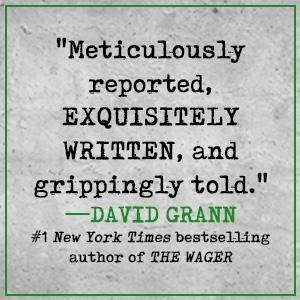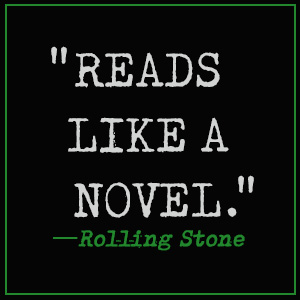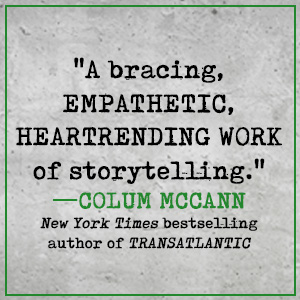Customer Services
Copyright © 2025 Desertcart Holdings Limited
Desert Online General Trading LLC
Dubai, United Arab Emirates


Full description not available




O**E
A Fascinating and Exceptional Read
All of the superlatives given by the reviewers of this book—compelling, riveting, fast-paced, can’t put down, and so many others—are certainly apropos, and I agree with them all. This is a masterpiece of well-researched and percipient scholarship written in the style of a narrative collage that keeps you wanting to know more about not only the murder, but about the “Troubles” and their impacts on the people of Ireland, the British Isles, and, indeed, the world. In fact, the next book I am delving into is Tim Pat Coogan’s “The Troubles”. What I truly love about Patrick Keefe’s approach is how he intertwines the mystery of the murder of Jean McConville, leading to the who, why, and how of that event, with the history of the time and the fascinating (and often tragic and distasteful) characters that play their role in the narrative. This book is gripping and I lost some sleep staying awake to read just one more chapter. I did find the documentary “I, Delours” on one of the streaming channels and it was evidence of this author’s skill in portraying her tragic persona; for me, she was the pivotal character in “Say Nothing” and I have yet to decide whether she was a heroine or a villain. Suffice it to say, her character was the portrait of the troubles, both good and ill.
R**R
4 Stars
4 well researched stars for this historic look at the "Troubles," the civil conflict in Northern Ireland.<b>SUMMARY</b>The story begins with Jean McConville, a widowed mother of ten (TEN!) children between the ages of six and twenty, being taken from her house in 1972 and being "disappeared." The Provisional IRA later claimed responsibility, saying McConville was an informer for the loyalists / UK army. No evidence has ever been found to support this accusation. Thirty years later her body was recovered, she has clearly been murdered. As they have grown up, her children have been fighting for a full investigation into her murder and to clear her reputation.The book goes on to describe the political climate and main players in the IRA from the time of the abduction to the present. It covers the infamous imprisonment of Dolours and Marian Price and the rise of controversial leader Gerry Adams.<b>WHAT I LOVED</b>I never fully understood what exactly the conflict in Northern Ireland was all about. This story gave all the details and reasons of the conflict and laid it out in a very human format. Author Patrick Radden Keefe made sure each person, the human side of the story was never lost.Extremely well researched. There are almost one hundred pages of works cited references. Keefe did his research!<b>WHAT I DIDN'T LOVE</b>It was kind of slow reading and I found myself often list in the details.<b>OVERALL</b>This is very worth reading, it's a well researched and human account of a turbulent period in Northern Irish history.
P**L
Be Prepared for a Riveting Book You Can't Put Down
Say Nothing by Patrick Radden Keefe is subtitled A True Story of Murder and Memory in Northern Ireland. It is very rare for me to ignore everything around me and become completely immersed in a book, no matter how great or suspenseful it is, but that is exactly what happened with this one. Being across the ocean, I really didn’t know that much about life in Northern Ireland during The Troubles, which stretched from 1968 to 1998, at the time events were happening. I first became aware of the deep divisions only after I began researching my ancestry, which led to Ballygawley, County Tyrone, Northern Ireland. During trips there, I visited Belfast and took the bus tours which included much about The Troubles and brought me past the Peace Walls and art commemorating both sides. In fact, one of the last British soldiers to be killed had the same last name as my ancestors (Neely), who was killed in an IRA bomb attack outside Ballygawley.So when I came across the story of Jean McConville, a 38-year-old mother of 10 children who was abducted and murdered by the IRA, I was intrigued. Who would burst into someone’s home, knowing the father had died of cancer, and remove the mother of children as young as six years of age right in front of them, take her to a remote location and murder her? They had to have known the children would be left on their own, perhaps even to die without adult care. And why would anyone be that inhumane?Patrick Radden Keefe’s book, Say Nothing, answers those questions in a very balanced way. Being a journalist by trade—a New Yorker Magazine award-winning journalist—I immediately knew from the level of detail that he had painstakingly researched not only Jean McConville and her family but also each of the individuals that had some level of participation in her abduction and murder. The result is an absolutely riveting story that delves deep into what causes people to become terrorists, the changes that occur in a person’s mind when they are raised among extreme levels of hatred and the extent to which they will go because they believe in a cause larger than themselves.What was particularly striking was the revelation that many of the people involved in acts of terror—the bombing of London and Northern Ireland and the killing of innocent civilians—suffered abnormally high rates of drug dependency, alcoholism and PTSD after The Troubles had officially ended with the Good Friday Peace Agreement of 1998. The agreement caused the IRA to stand down, the British to release political prisoners held without trial or conviction, but it fell short of turning Northern Ireland over to the Irish Republicans. Because that was the goal of the IRA, members were left wondering what the killing and maiming was all about if their leaders were willing to simply give up the goal and work with the British politically through Sinn Fein.In Jean McConville’s case—the central subject of this book—she was a Protestant that had taken work as a domestic in a Catholic household, subsequently falling in love with her boss’ Catholic son. In America, this would not have been perceived as a problem at all. In Northern Ireland, it led to the kiss of death and a generation of children traumatized by their father’s death, their mother’s murder and their subsequent separation and hellish time in abusive, Catholic-run children’s homes that seem right out of a Charles Dickens novel.The investigations into Jean McConville’s disappearance would lead to Dolours and Marian Price—it is Dolours’ picture that appears on the front cover, her face partially hidden consistent with IRA terrorists of the time. The damning evidence was in the form of Dolours’ own voice as she participated in a Boston College project in which she admitted on audiotape that she drove McConville across the border to Dundalk in the Republic of Ireland. Later, when the men instructed to kill her did not want to do that because McConville was a widowed mother of ten, Dolours drove back to Dundalk with two others, assumed to be her sister Marian and Ivor Bell, and murdered McConville, burying her in an unmarked grave. It would take decades and particularly strong storms to erode the ground in which she’d been hastily buried, for her body to be found. By that time, her children were grown and had families of their own.We do find out who fired the fatal shot that killed Jean McConville. But the story is far larger than that. It is the story of a country that had been invaded by foreign forces more than 700 years ago and divided in the early 20th century so that one part of the country became the free and independent Republic of Ireland while the other part remained a colony controlled by Great Britain. It is the story of those loyal to the United Kingdom as well as those carrying on a tradition of a free Ireland for which their ancestors fought for hundreds of years. It is also the story of supposed men of God—priests and ministers—who fueled the hatred within their communities, leading to spiraling violence and extremism on both sides. With Brexit, tensions have once again increased between the two factions and ultimately, it will be London who will decide its fate.I highly recommend this book. Be prepared for a riveting tale and a book you can’t put down.
Trustpilot
4 days ago
1 week ago